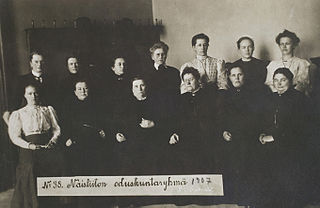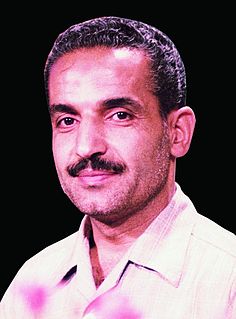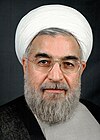
Seyyed Abolhassan Banisadr is an Iranian politician. He was the first President of Iran after the 1979 Iranian Revolution abolished the monarchy, serving from 4 February 1980 until he was impeached by parliament on 20 June 1981. Prior to his presidency, he was the minister of foreign affairs in the interim government. He has resided for many years in France where he co-founded the National Council of Resistance of Iran. At age 86, Banisadr is currently the oldest living former Iranian President.

Mir-Hossein Mousavi Khameneh is an Iranian reformist politician, artist and architect who served as the seventy-ninth and last Prime Minister of Iran from 1981 to 1989. He was a reformist candidate for the 2009 presidential election and eventually the leader of the opposition in the post-election unrest. Mousavi served as the president of the Iranian Academy of Arts until 2009, when Conservative authorities removed him.

The Prime Minister of Iran was a political post in Iran that had existed during several different periods of time starting with the Qajar era until its most recent revival from 1979 to 1989 following the Iranian Revolution.

The interim government of the Islamic Republic of Iran was established after the assassination of Mohammad-Ali Rajai (President) and Mohammad Javad Bahonar on 30 August. In accordance with the constitution, a Provisional Presidential Council formed the same day and proposed Mohammad-Reza Mahdavi Kani as Prime Minister to the Majlis. Majlis voted in favour of him on 2 September. His cabinet also received approval of the Majlis on 3 September. The main responsibility of this government was holding presidential elections. On 13 October, Ali Khamenei officially became president. His Prime Minister, Mir-Hossein Mousavi received Majlis's approval on 29 October and then the new government replaced Mahdavi-Kani's interim government.
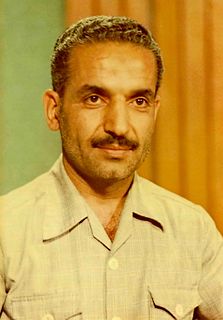
The Iranian presidential election of July 1981 took place on 24 July 1981 after the previous Iranian president, Abolhassan Banisadr, was impeached by the Majlis on 21 June and then sacked by the Supreme Leader, Ayatollah Khomeini, on 22 June. This led to the election of Mohammad Ali Rajai, the previous prime minister, winning approximately 12.9 million of the votes cast, which was 87-88% of the votes. The voter turnout was 65.29%.

Mohammad Reza Mahdavi Kani was an Iranian cleric, writer and conservative politician who was Acting Prime Minister of Iran from 2 September until 29 October 1981. Before that, he was Minister of Interior and Minister of Justice in the cabinets of Mohammad-Ali Rajai and Mohammad-Javad Bahonar. He was the leader of Combatant Clergy Association and Chairman of the Assembly of Experts and also founder and president of Imam Sadiq University.
A constitutional referendum was held in Iran on 28 July 1989, alongside presidential elections. Approved by 97.6% of voters, It was the first and so far only time the Constitution of the Islamic Republic of Iran has been amended. It made several changes to articles 5, 107, 109, 111, and added article 176. It eliminated the need for the Supreme Leader (rahbar) of the country to be a marja or chosen by popular acclaim, it eliminated the post of prime minister, and it created a Supreme National Security Council.

This article is a timeline of events relevant to the Islamic Revolution in Iran. For earlier events refer to Pahlavi dynasty and for later ones refer to History of the Islamic Republic of Iran. This article doesn't include the reasons of the events and further information is available in Islamic revolution of Iran.

On 28 June 1981, a powerful bomb went off at the headquarters of the Iran Islamic Republic Party (IRP) in Tehran, while a meeting of party leaders was in progress. Seventy-three leading officials of the Islamic Republic were killed, including Chief Justice Ayatollah Mohammad Beheshti. The Islamic Republic of Iran first blamed SAVAK and the Iraqi regime. Two days later, Ruhollah Khomeini accused the People's Mujahedin of Iran. A few years later, a Kermanshah tribunal executed four "Iraqi agents" for the incident. Another tribunal in Tehran executed Mehdi Tafari for the same incident. In 1985, the head of military intelligence informed the press that this had been the work of royalist army officers. Iran's security forces blamed the United States and "internal mercenaries".
Prime ministership of Mir-Hossein Mousavi were the third and fourth government of Iran after the Iranian Revolution. At that time, Ali Khamenei was the president.

In August 1981, President Mohammad-Ali Rajai and Prime Minister Mohammad-Javad Bahonar were assassinated in an explosion. Ali Khamenei was then elected as the third president of Iran in the Iranian presidential election, October 1981. He put forward Ali Akbar Velayati as his prime minister, but the Iranian parliament did not give him the vote of confidence, and he was defeated with a vote of 80 to 74. Subsequently, Ali Khamenei, though he had strong disagreements with Mousavi, as a compromise with the left-leaning parliament, agreed to offer him, Mousavi, for the post of premier. On 28 October, the parliament approved Mousavi with a vote of 115 to 39. Mousavi became the 79th Prime Minister of Iran on 31 October 1981, and remained the prime minister of Iran until 3 August 1989, for eight years.
Government of Mohammad-Ali Rajai was the first government of Iran after the Iranian Revolution. At that time, Abolhassan Banisadr was president and Mohammad-Ali Rajai was prime minister.
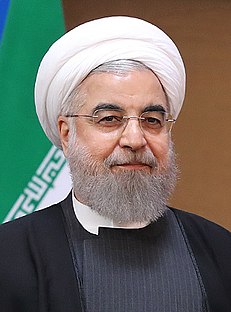
Hassan Rouhani is an Iranian politician serving as the current and seventh President of Iran since 3 August 2013. He was also a lawyer, academic, former diplomat and Islamic cleric. He has been a member of Iran's Assembly of Experts since 1999, member of the Expediency Council since 1991, and a member of the Supreme National Security Council since 1989. Rouhani was deputy speaker of the fourth and fifth terms of the Parliament of Iran (Majlis) and Secretary of the Supreme National Security Council from 1989 to 2005. In the latter capacity, he was the country's top negotiator with the EU three, UK, France, and Germany, on nuclear technology in Iran, and has also served as a Shi'ite ijtihadi cleric, and economic trade negotiator. He has expressed official support for upholding the rights of ethnic and religious minorities. In 2013, he appointed former industries minister Eshaq Jahangiri as his first vice-president.

Sadeq Tabatabaei was an Iranian writer, journalist, TV host, university professor at the University of Tehran and politician who served as Deputy Prime Minister from 1979 to 1980. He was also Deputy Minister of the Interior and oversaw the referendum on establishing an Islamic Republic in March 1979. He was Iran's Ambassador to West Germany from 1982 until 1986.
Events from the year 1989 in Iran.
The following lists events that happened during 1981 in Iran.

On 8 January 2017, Akbar Hashemi Rafsanjani, the fourth President of Iran and the country's Chairman of Expediency Discernment Council, died at the age of 82 after suffering a heart attack. He was transferred unconscious to a hospital in Tajrish, north Tehran. Attempts at cardiopulmonary resuscitation for more than an hour trying to revive him were unsuccessful and he died at 19:30 local time (UTC+3:30).



